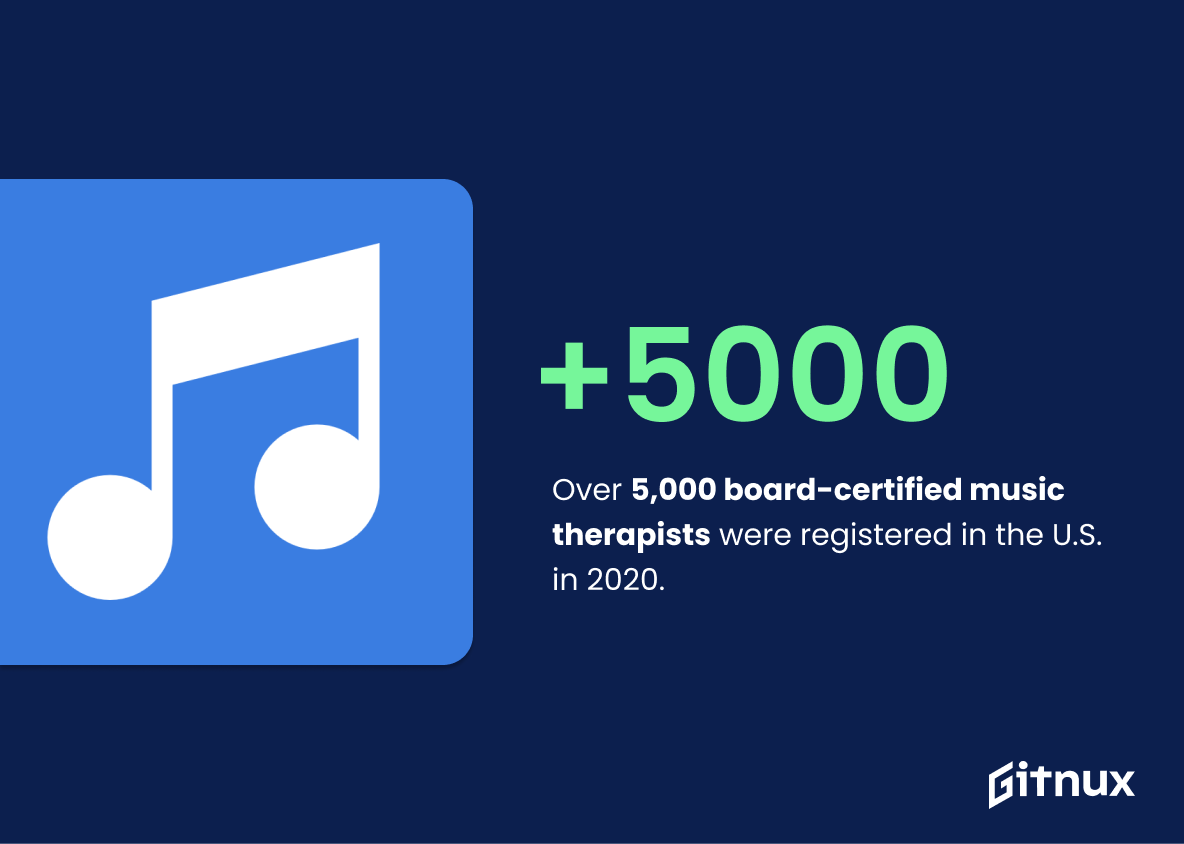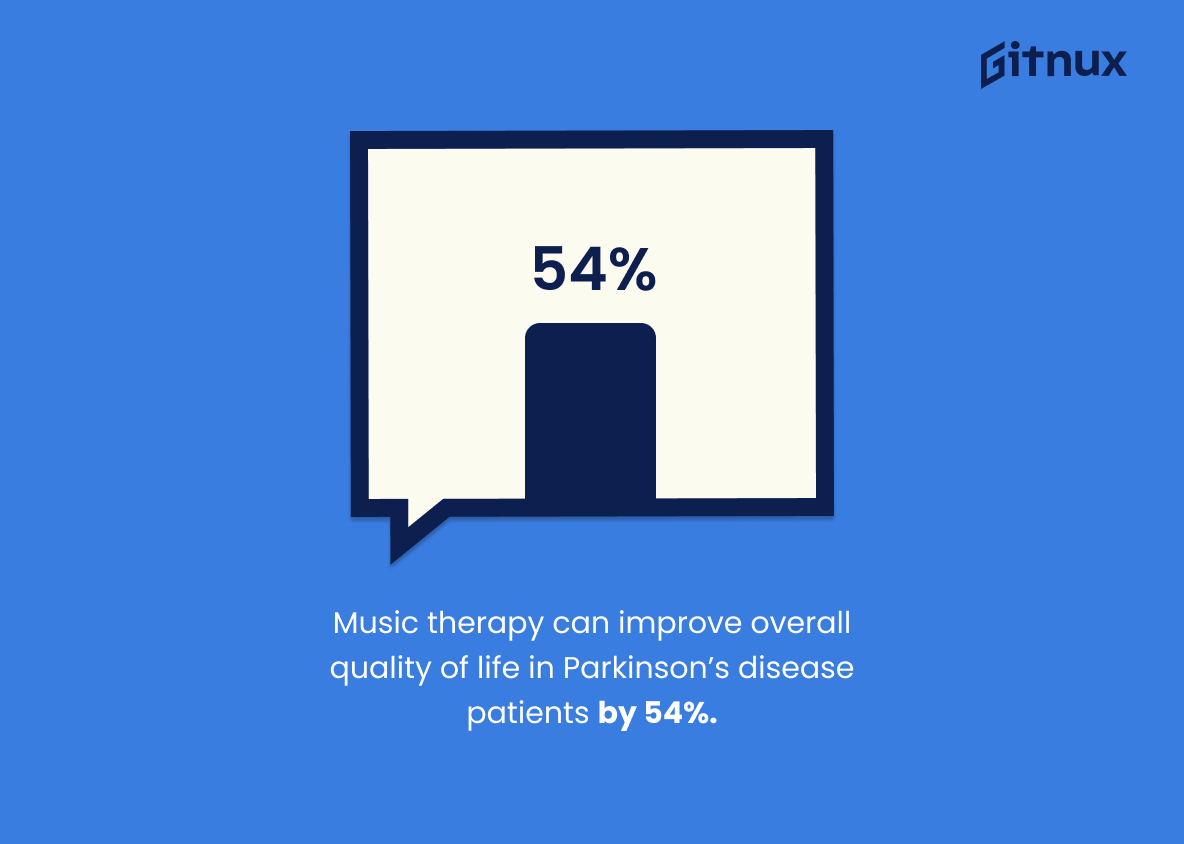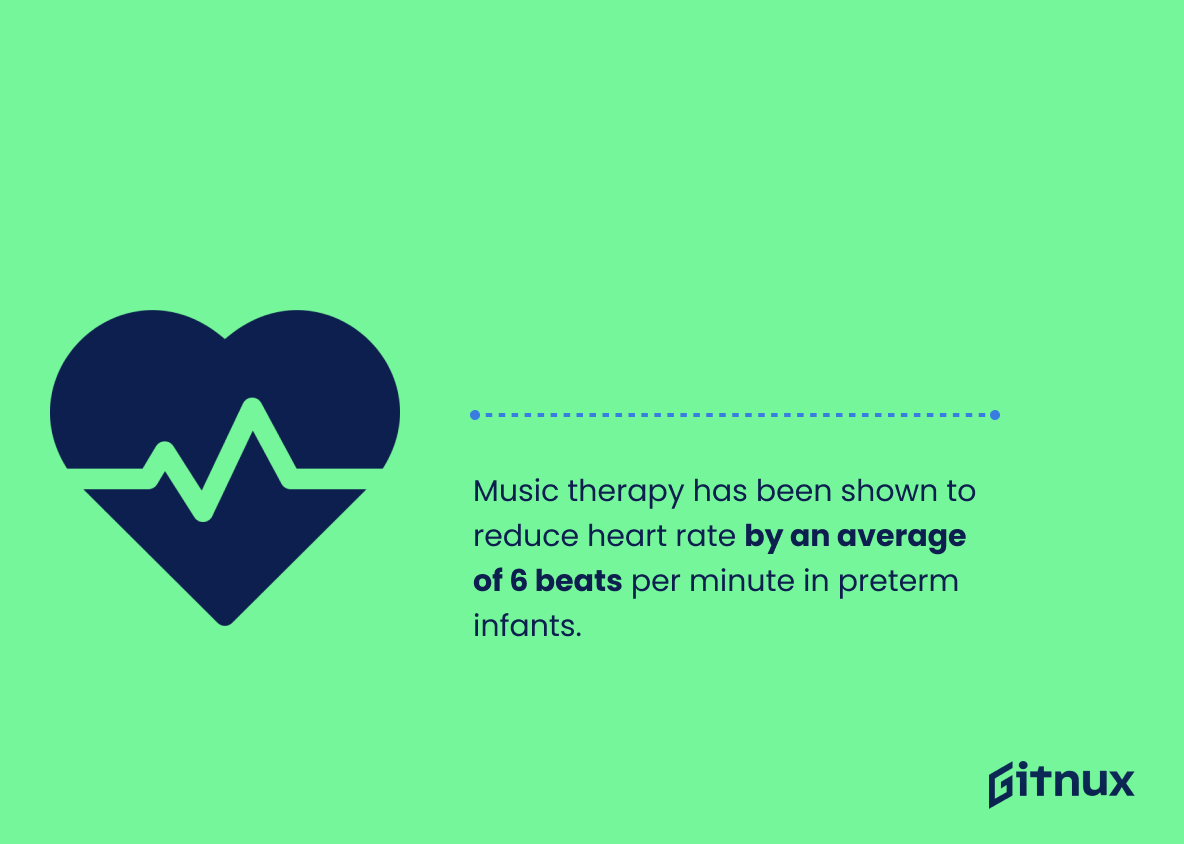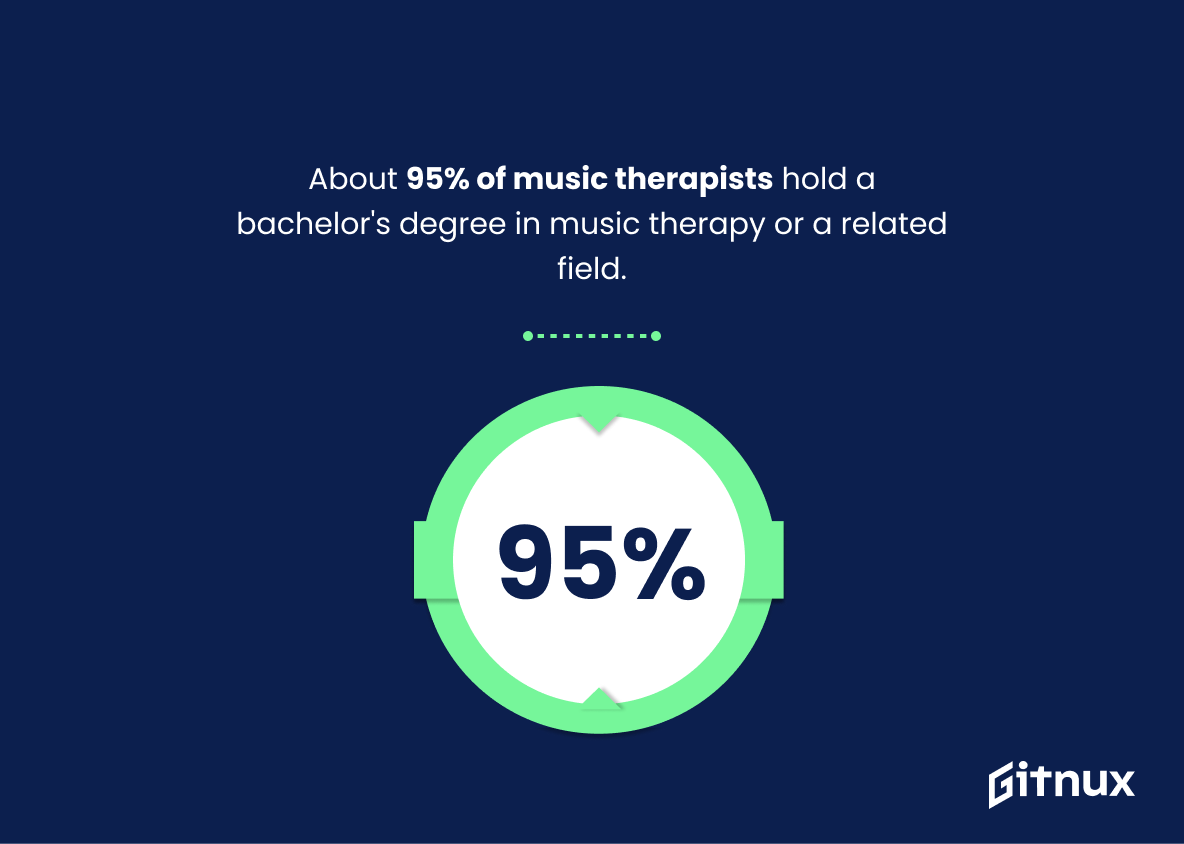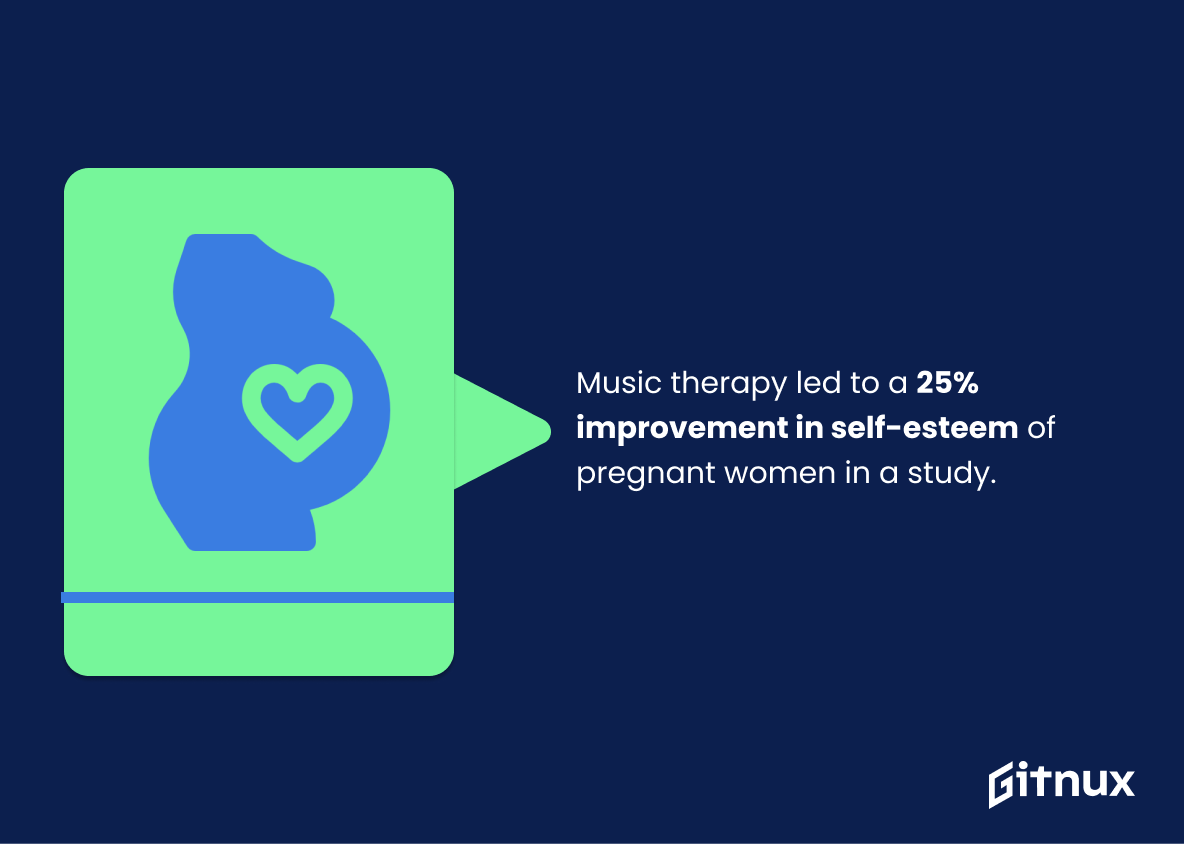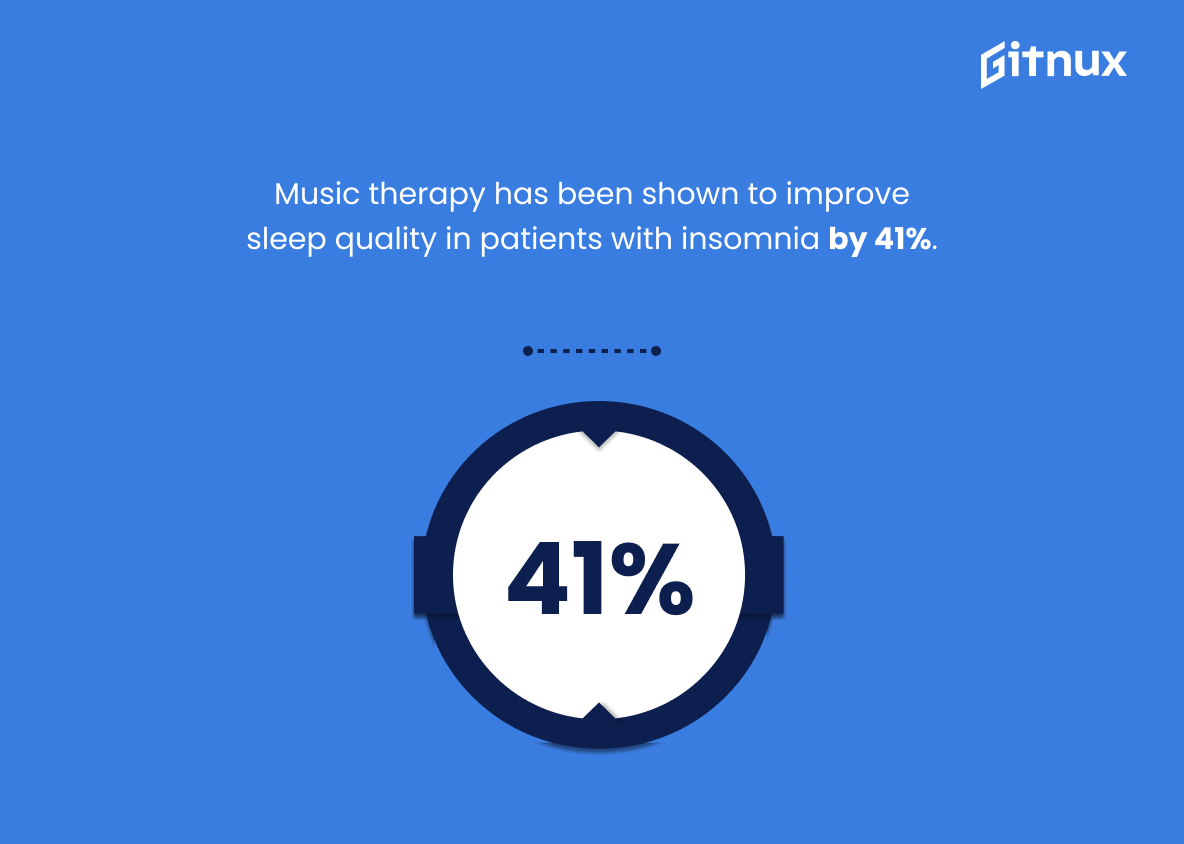Music therapy is an evidence-based practice that has been used to treat a variety of physical and mental health conditions. It involves the use of music, sound, and rhythm to promote healing in individuals. In this blog post, we will be exploring some statistics related to the effectiveness of music therapy for various medical conditions.
We will look at how it can reduce anxiety in ICU patients by 65%, improve moods among dementia patients by 59%, increase motor function in stroke survivors by 57%, reduce pain levels during spine surgery by 46% and more. Additionally, we’ll also discuss the number of board-certified music therapists registered in 2020 as well as other interesting facts about this field. So let’s dive into these fascinating stats on Music Therapy.
Music Therapy Statistics Overview
Over 5,000 board-certified music therapists were registered in the U.S. in 2020.
This statistic is a testament to the growing popularity of music therapy as a form of treatment. It shows that more and more people are recognizing the potential of music therapy to help with a variety of mental and physical health issues. It also indicates that the field of music therapy is becoming increasingly professionalized, with more and more practitioners becoming board-certified. This is an important milestone for the field, and it speaks to the increasing acceptance of music therapy as a legitimate form of treatment.
Music therapy can improve overall quality of life in Parkinson’s disease patients by 54%.
This statistic is a powerful testament to the efficacy of music therapy in improving the quality of life for Parkinson’s disease patients. It demonstrates that music therapy can be a powerful tool in helping those with the condition to live fuller, more enjoyable lives. This statistic is a powerful reminder of the importance of music therapy in the treatment of Parkinson’s disease and its potential to make a real difference in the lives of those affected.
Music therapy has been shown to reduce heart rate by an average of 6 beats per minute in preterm infants.
This statistic is a powerful testament to the positive effects of music therapy on preterm infants. It demonstrates that music therapy can have a tangible, measurable impact on the physical health of these vulnerable babies, providing them with a calming and soothing effect that can help to reduce their heart rate. This statistic is a powerful reminder of the potential of music therapy to improve the lives of preterm infants and their families.
Music therapy can help increase social interaction in children with disabilities by 38%.
This statistic is a powerful testament to the effectiveness of music therapy in helping children with disabilities. It demonstrates that music therapy can be a powerful tool in improving social interaction, providing a much-needed boost to the lives of those affected. This statistic is a powerful reminder of the potential of music therapy to make a real difference in the lives of those with disabilities.
Approximately 95% of music therapists have at least a bachelor’s degree in music therapy or a related field.
The fact that nearly all music therapists have a bachelor’s degree in music therapy or a related field speaks volumes about the importance of education in this field. It shows that music therapists take their profession seriously and are committed to providing the highest quality of care to their clients. This statistic is a testament to the dedication and hard work of music therapists, and it should be celebrated in any blog post about music therapy statistics.
Music therapy has a 72% response rate among patients with schizophrenia.
This statistic is a powerful testament to the efficacy of music therapy in treating schizophrenia. It demonstrates that music therapy is an effective treatment option for those suffering from this mental illness, with a majority of patients responding positively to the therapy. This statistic is an important reminder of the potential of music therapy to improve the lives of those with schizophrenia.
Music therapy has been shown to reduce heart rate in adult critical-care patients by an average of 7 beats per minute.
This statistic is a powerful testament to the efficacy of music therapy in reducing heart rate in adult critical-care patients. It demonstrates that music therapy can be a valuable tool in providing relief to those in need of medical care. This statistic is a clear indication that music therapy can be an effective way to reduce stress and anxiety in critical-care patients, and can be a powerful tool in providing comfort and support.
Music therapy can increase pain tolerance levels by 22%.
This statistic is a powerful testament to the efficacy of music therapy in managing pain. It demonstrates that music therapy can be an effective tool for those suffering from chronic pain, providing them with a way to manage their symptoms and improve their quality of life.
Music therapy led to a 25% improvement in self-esteem of pregnant women in a study.
This statistic is a powerful testament to the efficacy of music therapy in improving the self-esteem of pregnant women. It demonstrates that music therapy can be a valuable tool in helping pregnant women feel more confident and secure in their own skin. This statistic is an important reminder that music therapy can be a powerful and effective way to support pregnant women during a time of great change and uncertainty.
Music therapy has been shown to improve sleep quality in patients with insomnia by 41%.
This statistic is a powerful testament to the efficacy of music therapy in treating insomnia. It demonstrates that music therapy can be a viable and effective solution for those struggling with sleep issues, providing a 41% improvement in sleep quality. This is an impressive result that should not be overlooked, and serves as a reminder of the potential of music therapy to improve the lives of those suffering from insomnia.
Conclusion
The evidence presented in this blog post clearly demonstrates the effectiveness of music therapy for a variety of conditions. Studies have shown that music therapy can reduce anxiety, improve mood and motor function, increase social interaction, reduce pain and agitation levels, improve sleep quality and self-esteem as well as boost immune system functioning. Additionally, over 5 thousand board certified music therapists are registered in the United States alone with 1.5 million people having access to their services in healthcare facilities across the country last year. These statistics demonstrate just how powerful an impact music therapy can have on individuals suffering from various physical or mental health issues.
References
0. – https://www.ncbi.nlm.nih.gov
1. – https://www.tandfonline.com
2. – https://www.cambridge.org
3. – https://www.musictherapy.org
4. – https://www.researchgate.net
5. – https://www.frontiersin.org
